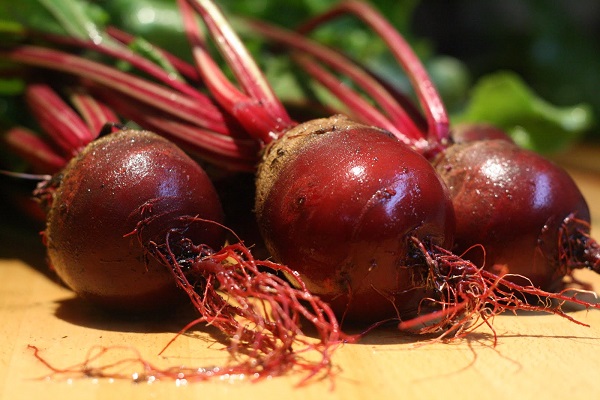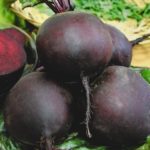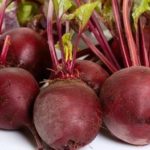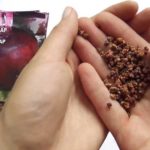Beetroot is considered to be traditional from the squad of swans, which we everywhere and quite successfully cultivate in vegetable gardens, we use in cooking as a useful and tasty ingredient. The plant is unique, not only its roots are suitable for food, but also its tops. They cook borscht, vinaigrettes, used in soups and vitamin salads.
Table of contents
Description and characteristics of beetroot
Vegetable is a biennial plant.Its roots are large, their weight reaches one kilogram. Color - maroon. Externally, the fruits look rounded or flat. Foliage wide, green shade. After planting in the ground in the second year, the period of flowering and the formation of seed material begins.
The period of planting and harvesting is different, depending on the climatic zones of cultivation of the plant, lasts from two to four months.
According to the formation of the harvest, beetroot is divided into four categories:
- early maturing (from 65 to 80 days);
- early (up to 100 days);
- middle ripening (up to 130 days);
- late-ripening (from 130 days).
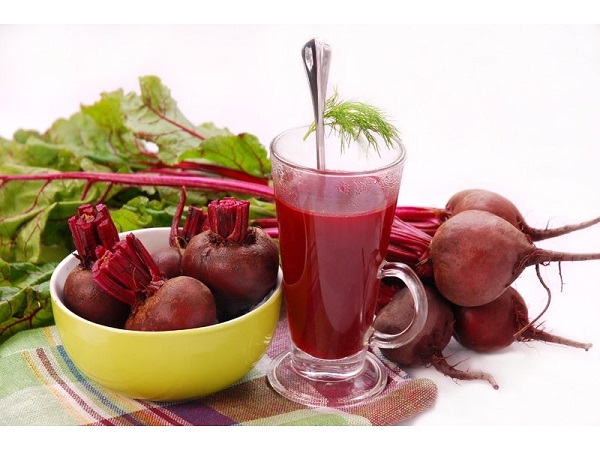
Homeland and regions of growing beetroot
Well-known garden crop appeared about two hundred years ago. Her ancestor is considered chard, growing in the wild in the countries of Western Europe, on the shores of the Atlantic Ocean. The plant is first mentioned in the fifth century BC. Mangold became the founder of today's beet varieties - table, sugar and fodder. From it modern types have adopted the main advantage - the content of a large amount of iodine.
The most popular varieties of beetroot
To date, agricultural technology brought a large number of varieties. But most often gardeners prefer the following:
- cold-resistant. The variety is early ripening, medium-shaped roots, ripen in two and a half months. The fruits are round, slightly flattened, their upper part is located above the surface of the soil, which makes it easy to harvest. The pulp is tasty, cherry shade, juicy. The average weight of the fetus reaches two hundred grams. When growing this type of ten-meter plot of beds you can collect from forty to seventy pounds of vegetables, which will be perfectly preserved. The plant is unpretentious, able to tolerate cold, rarely ill fungal formations. Beet recommended for breeding in the northern regions;
- fortune. The unpretentious beetroot plant of average terms of maturing, reliable, with a small rosette of leaves, gives stable yields. It is recommended to grow in the gardens of the Urals. Suitable for all types of culinary treatments, canning, bookmarks for long-term storage.Vegetables differ in large forms, their weight reaches three hundred and fifty grams. Productivity is high, reaches from forty to sixty kilograms. with ten square meters;
- Cold-resistant grade
- Fortune variety
- crimson ball. Beet round, medium early. Full maturity occurs in three to four months. The weight of vegetables ranges from three to five hundred grams. The plant is well resistant to diseases, does not undergo tsvetushnosti, gives a harvest of up to ninety pounds from ten square meters. It is considered the best grade for all types of processing. Stored wasteless for six - eight months;
- Pablo. The grade is high-yielding, is subject to cleaning in three months after emergence of shoots. Vegetables weigh up to one hundred grams, in the autumn season their weight reaches five hundred. The flesh is dark red, juicy and with excellent taste. Vegetable practically does not crack, rarely prone to stalking. The hybrid gives stable yields in the amount of six - seven dozen kilograms with ten squares, successfully used in cooking.
- Pablo Beet Varieties
The technology of planting in open ground beets
For this culture should pick up loose fertile soil. Preference is given to loamy chernozem and peatlands that have a neutral or slightly alkaline reaction. Acidity is very important for beets, otherwise the roots will be affected by diseases and can not be stored for a long time.
The best predecessors for this crop are cucumbers, tomatoes, potatoes and onions. Even though shoots can survive weak frosts, one should not risk with this - it is better to wait a little.
The step-by-step instruction of sowing in open ground is as follows - the bed is loosened to a depth of five centimeters, grooves are made at intervals of thirty centimeters. The depth of seeding should be about three centimeters. Seeds can be sown dry or pre-soak them in water. The soil before this is definitely necessary to moisten. The interval between seeds is from three to four centimeters. Planting beets, furrows should be sprinkled and watered. Shoots will appear in about a week.
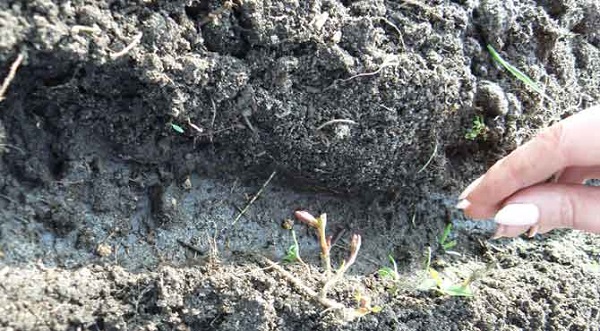
Cultivation and post-plant care
At the initial stage of growth, beets should be fed with nitrogen, then preference is given to potassium compounds. Further use of nitrogen fertilizers may cause voids and cracks to appear in the vegetable.
To support plants with potassium, it is best to apply wood ash to improve the resistance of the vegetable to disease.
Beets need constant watering, moisture loves. But waterlogging is not recommended for it, since it can cause diseases.
The soil on the beds must be loosened almost from the moment the sprouts form the second leaf. At the same time, weed is removed, shoots are thinned. By the way, the beets are perfectly transplanted and quickly take root in the new garden bed.
The second thinning is best done at the end of July, leaving up to ten centimeters between beets.
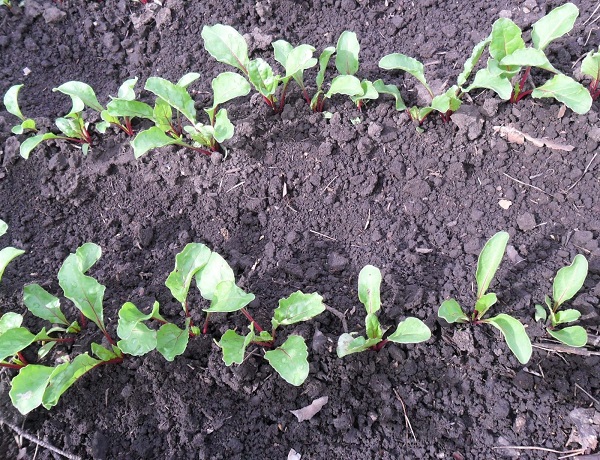
Harvesting and Storage
Mass cleaning falls on the first frost. It is important not to miss this moment, otherwise frost-bitten root crops will be poorly preserved.
Beets should be carefully removed from the ground, tear the tops of the hands.Then the vegetables remain in the garden to dry their wounds. Beets, which have injuries and diseases, are rejected and not deposited. The entire crop is stored in clean boxes and stored at a temperature of one to two degrees of heat.
It should be noted that the beets are best preserved, the growing season of which does not exceed five months. If the plans preserve the harvest for a long time, then you should use varieties of early ripeness, sowing them in mid-May. But for early planting suitable beet varieties that will be eaten daily.
